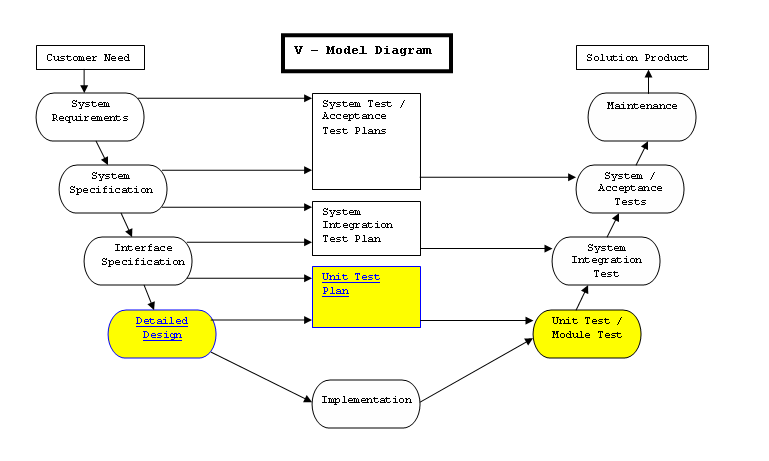Module Testing
A library may be composed of a single compiled object or several compiled objects. There is only a slight difference between unit testing and module testing. Modules are fully formed chunks of coherent source code that can typically be tested by driving a few function signatures with various stimuli. On the other hand, unit testing (which is considered as part of the implementation phase for this software development process) may involve testing one small part of a function that will never formally implement any function interface.
As a result of modules being more self-contained, module testing will likely require less testing infrastructure such as test harnesses and test stubs. The testing of modules could perhaps even be automated so that they can be included in regression test suites or acceptance test suites.
This page will address the following topics:
Module test plans must be created prior to module test execution. The following is a module testing test plan for the microwave oven example.
|
Module / Component |
Test Description |
|
Input Monitoring and
Processing Testing |
Tests for accuracy in
decoding input from keypad and door sensor.
Also tests proper calling of subfunctions based on
input from keypad and door sensor. |
|
Clock Testing |
Tests for errors in the
display of the time on the LCD. Tests
for proper numeric incrementation. |
|
Timer Testing |
Tests for accurate timer
operation based on inputs received from the keypad.
Checks for errors in decrementing the time displayed
on the LCD. Also
tests whether timer is stopped when stop/clear key is pressed. |
|
Auto Cook Presets Testing |
Tests for accuracy in
determining the proper power level and cooking time to be set depending
on which preset key is pressed. |
|
Auto Defrost Testing |
Tests for errors in the
setting of power levels and defrosting times depending on the food
product that is being defrosted. |
|
Cooking Control Testing |
Tests for errors in
reception of time and power level inputs and checks the accuracy of
signals to the oven indicating power levels and cooking duration. Also tests whether a
cooking process stops if a signal interrupt originating from the
stop/clear key is received. |
|
Oven Control Testing |
Tests for errors in the
control of the microwave generator.
Assures proper power settings are used and the
generator turns off and on as directed by the cooking control function. |
|
Time Display Testing |
Checks for errors in
time formatting and output on the LCD. |
|
Power Display Testing |
Checks for errors in the
display and formatting of power level settings on the LCD. |
|
Beeper Testing |
Checks for errors in
sound tone and duration given signals to the beeper from control
software. |
V-Model Diagram
